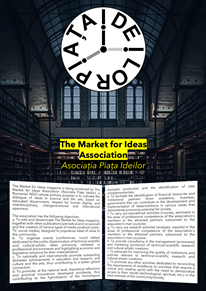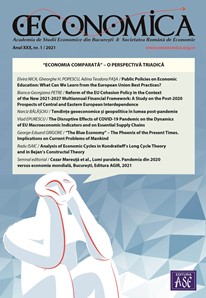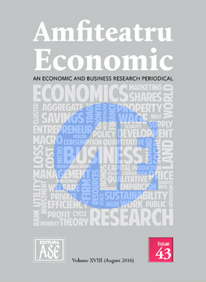
Is Bitcoin the Costly Highway?
Bitcoin has recently reached a new all-time high in terms of USD, going over $ 62,500. Just as every other time it has happened, this time again there are voices that rejoice the feat and numerous others that decry its sheer volatility, bubble behaviour, deflationary character and, most of all, humongous costs and energy consumption.
One tool that monitors Bitcoin’s energy consumption, Cambridge Bitcoin Energy Consumption Index estimates that Bitcoin’s share of the world consumption of electricity is 0,49%, close to 109 TWh annually.
Figure 1: Total Bitcoin electricity consumption

Source: CBECI.org
Is this much? Is it little? Should we care? Let’s put these questions in historical perspective.
Bitcoin is hailed by its enthusiasts as the new – digital – gold and this is not at all unrelated to the fact that it was designed to mimic the scarcity and the yield curve of a precious metal. Satoshi Nakamoto, its creator, has even called the production process “mining”, although the actual competitive computation process that extracts new bitcoins out of the mathematical nothingness has nothing but the logarithmic yield curve of the cumulative supply of bitcoins to resemble the pickaxes, baskets, soil and water involved in the traditional process that amassed above ground, over millennia, the three proverbial Olympic-sized swimming pools of gold. Saifedean Ammous’ bestseller even argues forcefully and announces the coming of the age of the New Gold Standard, the Bitcoin Standard.
And it is because of precisely the same similarity with gold that its detractors wish it shares the same fate – the one of the last century, that is. And they have illustrious predecessors in their scepticism and even enmity towards the new gold-like kid on the block (pun intended).
The Gold Standard, that was until fifty years ago the linchpin of the monetary and banking infrastructure of Western capitalism, has seen a slow and seemingly implacable exit from the front stage of history, being now mainly relegated to a symbolic anchor among the other assets on central banks’ balances. Even in its monetary role, it is now acting like a national jewel, to be locked in the public safe box and only shown around at festive times. Or so would its detractors have it.
But who are these illustrious sceptics and even haters of gold? Let’s name here just two: Adam Smith and John Maynard Keynes, from the mainstream point of view the alpha and omega of the economics profession, the latter boasting the peculiar honour of having slapped the “barbarous relic” label on the glittering yellow metal.
And why did they object to gold and other precious metals, with an occasional twist of hatred, when it came to their monetary use? To put it briefly, the reasons were two, and they were related to scarcity: gold was scarce and therefore deflationary and costly.
Let’s leave deflationary for another time, and concentrate on costly.
Adam Smith was the first to argue, in his famous An Inquiry into the Nature and Causes of the Wealth of Nations, published in 1776, that gold and silver amounted to a “dead stock” and that if we were to use – at least in part – other monetary instruments that are cheaper to produce, such as paper, we could increase the quantity and employment of the other parts – the non-monetary parts – of circulating capital: “provisions, materials and finished work”, in Smith’s words. Substituting paper for metallic money was just as we would enjoy more land for agricultural and other productive purposes if we could somehow get rid of road transportation. To quote his famous words at length, this is what he had to say about metallic money:
“It is a very valuable part of the capital of the country, which produces nothing to the country. The judicious operations of banking, by substituting paper in the room of a great part of this gold and silver, enables the country to convert a great part of this dead stock into active and productive stock; into stock which produces something to the country. The gold and silver money which circulates in any country may very properly be compared to a highway, which, while it circulates and carries to market all the grass and corn of the country, produces itself not a single pile of either. The judicious operations of banking, by providing, if I may be allowed so violent a metaphor, a sort of waggon-way through the air; enable the country to convert, as it were, a great part of its highways into good pastures and corn-fields, and thereby to increase very considerably the annual produce of its land and labour.”
However, Smith was careful to argue that paper substitutes were to replace only in part gold and silver that could thus be employed with further benefits abroad, and that the total money supply could and should not increase above the value of previously circulating gold and silver, and that it would be dangerous for the banks and for the economy to paper-finance what he understood by fixed capital, that is, long term investments.
Nonetheless, this manner of argumentation was further used by many subsequent thinkers who took the next logical steps and advocate for the total replacement of costly metals from their secular monetary role.
And this is precisely why Bitcoin’s detractors resent it, with an added ecological twist for this day and age. To the extent that Bitcoin is designed as a “peer to peer electronic cash system”, as a currency, then it’s as bad and even worse than gold, since at least gold has its non-monetary uses that one is hard-pressed to find in Bitcoin – although it can compensate with virtually indefinite divisibility, its 100 milion satoshis being just a stopping point beyond which there is more room for new subunits.
Figure 2: Comparative cost of Bitcoin

Source: CBECI.org
But this argument from cost-effectiveness misses one crucial point: money is supposed to be relatively scarce, costly and hard to replicate or double-spend. As hyperinflations and financial crises and depressions have proven, if we think we can economize on the cost of the monetary standard, we are sure to run into much costlier complications. Smith, being the proto-economist, had an excuse to think as such. Ricardo, writing in early nineteenth century, before the monetary, capital and interest theory were sufficiently developed, can again be understood. But economists, such as Milton Friedman or the above-mentioned Keynes, that advocated for cheaper or costless money after the turn of the twentieth century have no excuse, and neither anyone who does it now, Modern Monetary Theory supporters included.
It was Ludwig von Mises in his 1912 Theory of Money and Credit who integrated money into the general theory of subjective value and marginal analysis and showed that any attempt to cheapen the monetary standard leads to inflationary redistribution and an accelerated increase in prices, ultimately leading to the destruction of the fiat monetary standard. Moreover, even the seemingly innocuous banking practice that Smith writes about, the financing of real bills – that is, short term projects and debt – leads to an artificial expansion of credit that lowers such a key indicator of the economic system as the interest rate and thus engenders entrepreneurial miscalculations and malinvestments of the scarce stock of capital and consumption goods, in an ultimately failing attempt to expand the economy’s productive structure beyond its real capacity and against peoples preferences between consuming now and saving for later.
These disastrous feats cannot be accomplished without a banking and financial sector being capable of using a costless monetary standard to intervene, first, increasing the supply of money and, second, increasing the supply of credit, both in a fictitious way. After the boom-bust cycle is over, we can count the real opportunity costs of cheap money: redistribution of real wealth from the majority of the population that sees its costs rising quicker than their income towards a minority that can use the new money first, before its new higher incomes are matched by higher costs; real capital goods wasted on monstrous projects that will never reach fruition or that will have to wait years before being completed in part of in full.
It was again Mises who argued that the kind of destruction and injustice brought about by inflation and recurring crises was what ultimately determined the citizens of capitalist countries to abandon the ideal of a free-market system and look around for socialist or interventionist alternatives.
Therefore, when we think about Bitcoin being like gold and silver, a costly highway in Smithian terms, we should keep in mind that, instead of the good pastures and corn fields promised, we will have to wade through the mud and the blood left behind by the use of paper money, as history showed us time and again.
Photo by Daniel St.Pierre from Pexels








